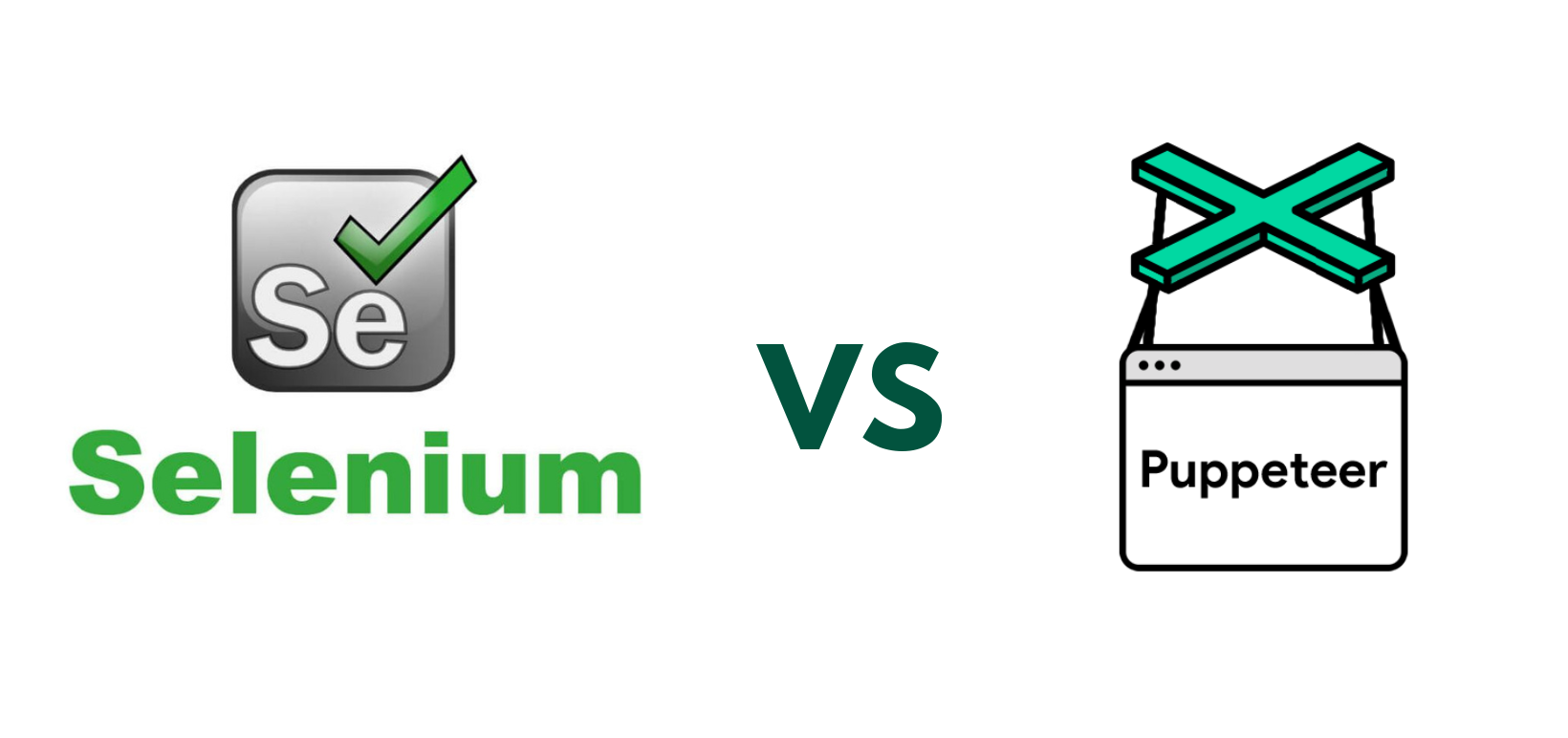Selenium vs Puppeteer: A Comprehensive Comparison of Test Automation Tools

In today's software development and testing landscape, automated testing has become a crucial tool for improving efficiency and quality. When it comes to test automation, choosing the right tool is paramount to the success of a project. Two highly acclaimed tools, Selenium and Puppeteer, have gained significant influence in the field of test automation. They offer powerful features and capabilities, but for many testers and developers, deciding which one is best suited for their project can be a dilemma.
In this article, let’s together get a comprehensive comparison of Selenium and Puppeteer, exploring their strengths, weaknesses, and suitable use cases. By understanding their features and functionalities, you'll be able to make an informed decision and select the most suitable tool for your project.
What is Selenium?
Selenium is one of the earliest and most well-known web automation testing frameworks. It supports multiple programming languages, such as Java, Python, C#, etc. It allows you to control browser behavior and simulate user actions like clicking, inputting, etc., on web pages. Selenium can be used in conjunction with different browsers such as Chrome, Firefox, and Edge, making it useful for cross-browser testing.
Advantages of Selenium
- Cross-browser compatibility: Selenium allows testers to write and execute tests on different browsers, ensuring comprehensive coverage.
- Large community support: Selenium has a vast and active community, providing extensive resources, tutorials, and forums for assistance.
- Robust functionality: Selenium offers a rich set of features for interacting with web elements, handling alerts, and navigating through pages.
- Integration with other testing frameworks: Selenium can be seamlessly integrated with popular testing frameworks and tools, enhancing its capabilities.
Disadvantages of Selenium
- Steeper learning curve: Selenium can be challenging for beginners due to its complex setup and documentation.
- Lack of direct support for headless browsers: Selenium requires additional configurations and tools to work with headless browser environments.
- Synchronization and stability issues: Selenium can encounter synchronization problems when dealing with dynamic web content, leading to flaky test results.
- Slower execution speed: Selenium's architecture can result in slower test execution compared to other tools.
What is Puppeteer?
Puppeteer is a Node.js library developed by Google that provides a set of APIs for controlling Chrome or Chromium browsers. Puppeteer offers powerful features like generating screenshots, creating PDFs, automating form filling, simulating keyboard and mouse inputs, and more. It is particularly useful for tasks like automated testing, web scraping, and generating web page snapshots.
Advantages of Puppeteer
- Ease of use: Puppeteer has a simple and intuitive API, making it easy to get started with automation tasks.
- Headless browser support: Puppeteer natively supports headless browser environments, enabling faster and more efficient testing and scraping.
- Enhanced control and debugging: Puppeteer provides extensive control over browser behavior, allowing developers to simulate user interactions and debug issues effectively.
- Powerful web scraping capabilities: Puppeteer offers robust tools for extracting data from websites, including taking screenshots, generating PDFs, and accessing the DOM.
Disadvantages of Puppeteer
- Limited browser support: Puppeteer primarily supports Chrome and Chromium browsers, which may restrict testing scenarios that require cross-browser compatibility.
- Smaller community: While Puppeteer has a growing community, it is not as extensive as Selenium's, which means finding resources and support can be more challenging.
- Less flexibility for advanced scenarios: Puppeteer's focus on simplicity may limit its capabilities for complex test automation scenarios that require advanced customization.
- Performance limitations: Puppeteer may have slower execution speeds for certain operations compared to Selenium.
Use Case Scenarios: Selenium vs Puppeteer
Case 1: Mobile Testing
Selenium: Selenium integrates with frameworks like Appium, allowing testers to automate mobile applications across different platforms.
Puppeteer: Puppeteer does not have native support for mobile testing, but it can be combined with tools like Jest and Detox to automate mobile applications.
Case 2: Network Interception
Selenium: Selenium lacks built-in support for intercepting and modifying network requests, requiring additional tools or libraries for network interception.
Puppeteer: Puppeteer includes robust network interception capabilities, allowing users to modify requests, simulate offline scenarios, and monitor network activity.
Case 3: Webpage Interaction Monitoring
Selenium: Selenium can monitor webpage interactions by capturing user actions and validating the expected behavior.
Puppeteer: Puppeteer allows for monitoring webpage interactions by tracking user events, inspecting the DOM, and verifying responses.
Case 4: Handling Dynamic Content
Selenium: Selenium provides various mechanisms, such as explicit and implicit waits, to handle dynamic content by ensuring the page has finished loading before interacting with elements.
Puppeteer: Puppeteer offers similar mechanisms, including waitUntil options and DOM mutations, to handle dynamic content effectively.
Case 5: Handling iFrames and Pop-ups
Selenium: Selenium provides built-in methods to switch to and interact with elements within iFrames or handle pop-ups using switch and window handles.
Puppeteer: Puppeteer offers similar functionality to handle iFrames and pop-ups using frame navigation and window handling methods.
Case 6: Regression Testing
Selenium: Selenium supports regression testing by comparing expected and actual results to identify any deviations.
Puppeteer: Puppeteer can be used for regression testing by automating repetitive tasks and verifying that the application behaves as expected.
Case 7: Cross-Browser Testing
Selenium: Selenium's broad browser support allows testers to write tests once and execute them across multiple browsers, ensuring consistent behavior.
Puppeteer: While Puppeteer primarily supports Chrome and Chromium browsers, it can be used with tools like Playwright to achieve cross-browser testing.
Conclusion
Both Selenium and Puppeteer are powerful tools for test automation, each with its own advantages and disadvantages. Selenium's broad browser support, large community, and robust functionality make it a popular choice for cross-browser testing. On the other hand, Puppeteer's ease of use, headless browser support, and advanced web scraping capabilities make it well-suited for modern web automation tasks.
The choice between Selenium and Puppeteer depends on specific project requirements, such as the need for cross-browser compatibility, simplicity, or advanced features. Understanding the strengths and weaknesses of each tool helps testers and developers make informed decisions to ensure efficient and effective test automation.


